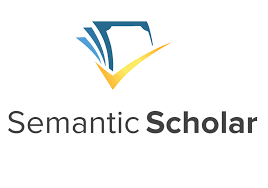Navigating Complexities in Medical Text Translation: Challenges, Strategies, and Solutions
DOI:
https://doi.org/10.69760/aghel.01024080Keywords:
medical translation, Skopos theory, intertextual coherence, acronyms, eponymsAbstract
The translation of medical texts is a highly specialized field that demands precision, linguistic proficiency, and subject-matter expertise. This study examines the unique challenges of translating medical documents, emphasizing their critical role in global healthcare. By applying theoretical frameworks such as Reiss' text typology and the Skopos theory, the research highlights the importance of functional equivalence and intertextual coherence. The paper identifies key challenges, including the translation of synonyms, homonyms, acronyms, eponyms, and pharmaceutical texts, and provides practical strategies to overcome these issues. Collaborative efforts between translators and medical professionals, continuous education, utilization of glossaries and translation tools, and rigorous peer review processes are proposed as essential solutions. Real-world case studies illustrate the profound consequences of mistranslations and the benefits of adopting holistic and adaptive approaches. This research underscores the pivotal role of medical translation in fostering effective communication, enhancing patient safety, and advancing global health outcomes.
References
Adiel, M. A. E., Elsadig, M. A., Altigani, A., Mohamed, Y. A., Ahmed, B. E. S., & Elhassan, S. M. O. (2023, July). Accuracy and problems of machine-based translation in contrast to human-based translation when rendering health awareness texts versus poetry texts. In Academic J. Interdiscipl. Stud. (Vol. 12, No. 4, pp. 223-231).
Babayev, J. (2016). TO THE QUESTION OF SIMILAR STYLISTIC DEVICES DIFFERING IN QUALITY AND QUANTITY. Вестник Нижегородского государственного лингвистического университета им. НА Добролюбова. Вып. 36.–Н. Новгород: НГЛУ, 2016.–210 с. ISSN 2072-3490, 11.
Babayev, J. (2023). Cognitive aspects of simultaneous and consecutive interpretations. Interdisciplinary Science Studies, (1).
Chen, Y., Arkin, J., Dawson, C., Zhang, Y., Roy, N., & Fan, C. (2024, May). Autotamp: Autoregressive task and motion planning with llms as translators and checkers. In 2024 IEEE International conference on robotics and automation (ICRA) (pp. 6695-6702). IEEE.
Hoang, L. B. (2021). Key issues in medical translation among English-Vietnamese professional medical translators and medical professionals: A descriptive survey. Transletters. International Journal of Translation and Interpreting, (5), 47-67.
Ismailli, T. A GENERAL OVERVIEW OF THE NOTIONAL PARTS OF SPEECH IN ENGLISH AND AZERBAIJANI. EXPERIMENTAL PHYSICS, 114.
Javid, B. (2023). Significance of language skills and language aspects in sight translation. Danish scientific journal, 1(77).
Khashimovich, B. R., Salahitdinovna, M. G., & Artigalievna, R. N. (2022). The Specifics of the Translation of Scientific Texts: Comparison and Analysis of the Text of the Original and Translation (on the Example of the Uzbek and Russian Languages). Journal of Positive School Psychology, 228-231.
Khayyal, O. (2022). Teaching and Learning Scientific Translation: Problems, Challenges, and Solutions. British Journal of Translation, Linguistics and Literature, 2(3), 38-48.
Kuzmina, O. D., Fominykh, A. D., & Abrosimova, N. A. (2015). Problems of the English abbreviations in medical translation. Procedia-Social and Behavioral Sciences, 199, 548-554.
Lee, S., Lee, J., Moon, H., Park, C., Seo, J., Eo, S., ... & Lim, H. (2023). A survey on evaluation metrics for machine translation. Mathematics, 11(4), 1006.
Mammadova, I. (2024). Understanding the Function of Past Participles in Complex Sentences. Journal of Azerbaijan Language and Education Studies, 1(1), 1-21. https://doi.org/10.69760/jales.2024.00100
Nuri, A. (2024). The Intersection of Literature and Social Movements: A Case Study of Postcolonial Narratives. Journal of Azerbaijan Language and Education Studies, 1(1), 77-86. https://doi.org/10.69760/jales.2024.00107
Sadiqzade, Z. (2024). Fostering Emotional Intelligence in Language Learners. Journal of Azerbaijan Language and Education Studies, 1(1), 67-76. https://doi.org/10.69760/jales.2024.00106
Tu, H., Wang, Z., Wang, S., & Zhao, Y. (2024). Multimodal image translation algorithm based on Singular Squeeze-and-Excitation Network.
Zhang, Z., Zhang, Y., Xiang, L., Zhao, Y., Zhou, Y., & Zong, C. (2023, October). A Novel Dataset and Benchmark Analysis on Document Image Translation. In China Conference on Machine Translation (pp. 103-115). Singapore: Springer Nature Singapore.
Zimmermann, F. (1989). Terminological problems in the process of editing and translating Sanskrit medical texts. In Approaches to Traditional Chinese Medical Literature: Proceedings of an International Symposium on Translation Methodologies and Terminologies (pp. 141-151). Dordrecht: Springer Netherlands.
Downloads
Published
Issue
Section
License
Copyright (c) 2024 Acta Globalis Humanitatis et Linguarum

This work is licensed under a Creative Commons Attribution-NonCommercial-NoDerivatives 4.0 International License.







